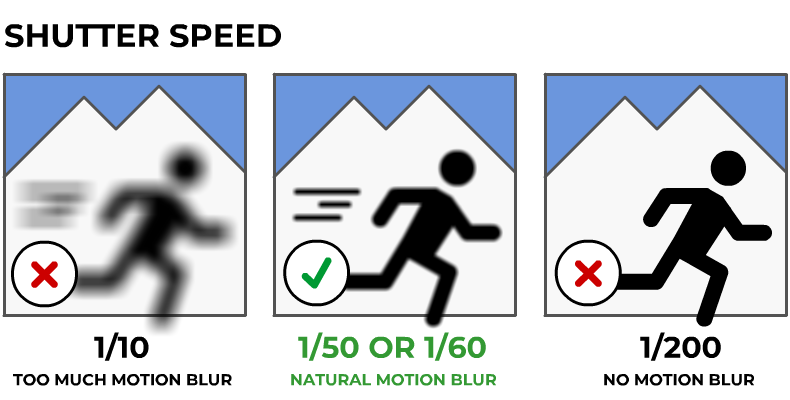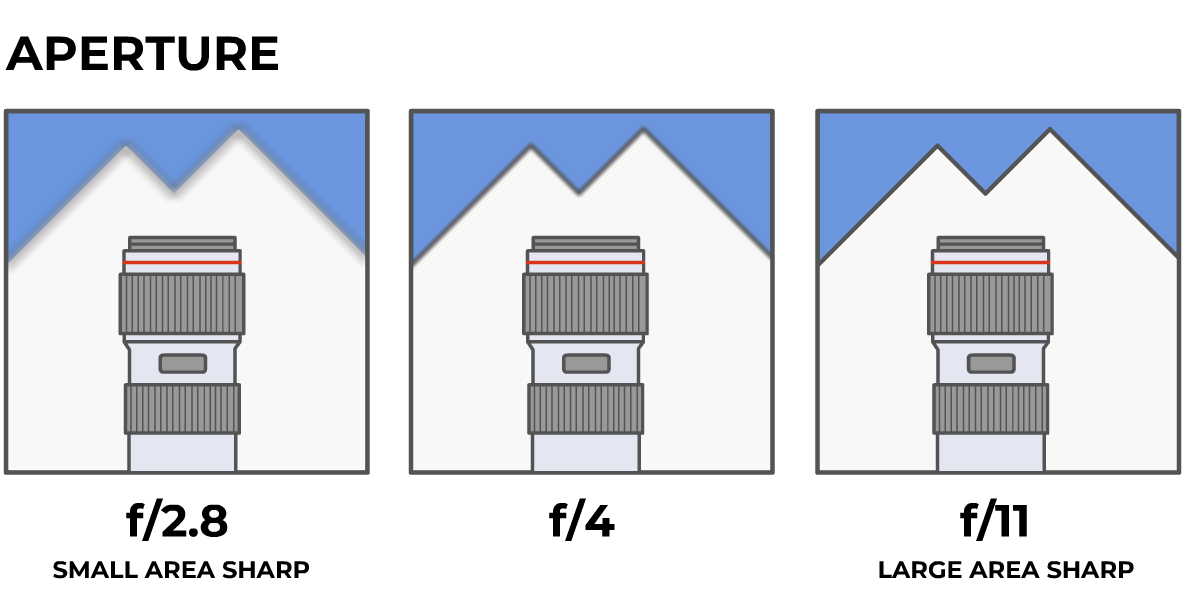Shutter speed
What does it do?
Shutter speed determines how long the light hits your sensor, measured in fractions of a second (e.g. 1/50, 1/200, etc.).
Side effect
As a side-effect it also determines the amount of motion blur. Our eyes have been trained to expect a certain amount of blur whenever someone or something moves in films. To get that natural-looking motion in your shots it's best to stick to the so-called '180 degree shutter rule': your shutter speed should always be double your frame rate. For example, if your frame rate is 25 frames per second, your shutter speed should be (2 x 25 = ) 1/50th of a second.
While you could break this rule for dramatic effect, a faster shutter speed leads to jarring, restless motion (as if there are frames missing from your footage). If you use a longer shutter speed, your actors will look like ghotly figures that leave behind a trail of blurs.

Aperture
What does it do?
The aperture determines how much light hits the sensor, measured in f-stops. The aperture is a ring inside your lens, that can open up to let in more light, or close down to let in less light. Very much like your eyes' iris.
Side-effect
A nice side-effect of the aperture is that it also determines how much is in focus in your shot. If you open the aperture to let's say f/1.8, not only will there be more light falling onto your sensor, only a small part of your image will be in focus. On the other hand, if you close down the aperture to f/11, everything in your shot will be in focus.
This way, you can really use the aperture creatively: open your aperture for those creamy blurry backgrounds and draw the viewer's attention to your subject, or close it down to show all of your subject's surroundings.
Note: the confusing part about aperture is that opening the aperture to let in more light, equals a low number (e.g. f/1.8 or f/1.2) while closing the aperture equals a high number (e.g. f/22)

ISO
What does it do?
We'll end with the most straightforward of the three: ISO. ISO determines how sensitive your sensor is to light. In the analog film days you would have different film stocks with different sensitivities, but luckily on digital cameras you can adjust the sensitivity without changing your film stock ;-)
Side-effect
The higher your ISO, the more noise gets introduced into your image. While most modern cameras can handle higher ISO's with ease, it's still a good idea to test what ISO setting you find acceptable on your camera.

Quick reference
To sum up, here's a quick reference chart:
| Name | What does it do? | Side-effects |
| Shutter speed | How long does the light hit the sensor? | Motion blur |
| Aperture | How much light hits the sensor? | How much is in focus |
| ISO | How sensitive is your sensor to light? | Adds noise |
